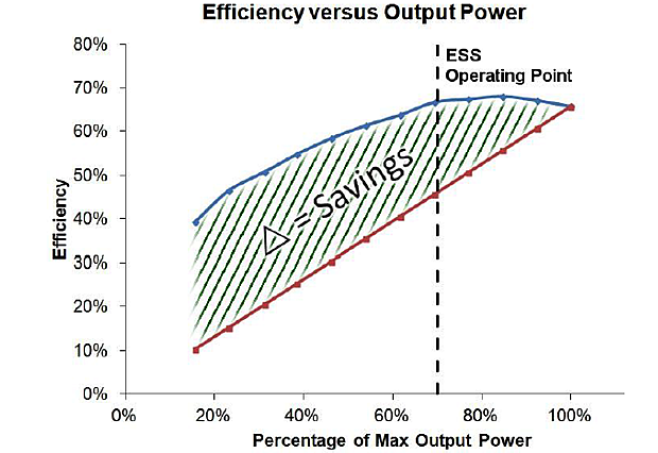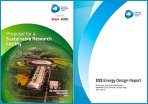Copyright 2012 neutronsources.org | All rights reserved. | Powered by FRM II | Imprint / Privacy Policy
Innovation and Engineering Set ESS on Path to Sustainability
Building ESS. Research with neutrons has long delivered new and more environmentally responsible solutions for our planet. As part of its core framework, the European Spallation Source and its partners are working to realise sustainability goals for construction and operations.
Date: 02/12/2015
Source: http://europeanspallationsource.se/

LUND—In its earliest days the European Spallation Source (ESS) laid the foundation for sustainability with three conceptual pillars: Responsible, Renewable, and Recyclable. Guided by Swedish law, ESS abides by its commitment to both the public and the European scientific community to create sustainable science in the interest of society with minimal environmental impact.
Recent work during the ESS Construction Phase has resulted in notable gains for the project’s Responsibility commitment, which refers to responsible energy management.

“ESS has reduced its needs quite a bit with respect to the initial goals for electricity use,” said Roland Garoby, ESS Technical Director. “That’s a winning case, because what you don’t use in power means less power lost. There’s also less energy to recover.”
The sustainability goals for ESS have impacted design, construction and planning, and will come to bear on preparations for how the facility will serve the research community from 2023 onward. As the project evolves, ESS management, scientific partners, and the project’s primary construction partner, Skanska, investigate solutions for environment-related issues that influence each of these aspects of building ESS.
Green Priorities for Big Energy Systems: IOTs, Klystrons and Modulators
The power required to run the linear proton accelerator (linac) at ESS—which will be the most powerful in the world, with 5 MW average beam power and 125 MW of peak power—will account for greater than half of the facility’s roughly 270 GWh of annual energy needs. Increasing the efficiency of energy consumption for the linac and its component systems is an important goal of the ESS Accelerator Division and its 26 development partners, including the French national organisations CEA and CNRS who are working on the efficient superconducting linac.
“To increase energy efficiency, we consider every single system. We think about how to design smart, technical solutions,” said Mats Lindroos, Head of the ESS Accelerator Division. “We are also developing the software, the control algorithms, to make these devices smarter.”
An important investment ESS has made over the last few years is research into Multi-Beam Inductive Output Tubes (MB-IOT), a type of power-efficient Radio Frequency (RF) source for the linac. The MB-IOTs are projected to deliver typical power savings of 2 to 3 MW of the 19 MW of power required to drive the accelerator. Following scheduled completion of prototype development in 2016, ESS will test the designs in collaboration with CERN at the Swiss facility.
MB-IOTs as well as klystrons—another type of RF source that will power the linac—use powerful radio waves to push the proton beam to increasing speeds as it shoots toward a solid, rotating tungsten disc known as the target. Upon impact with the target, the protons release neutrons from the target material—the process known as spallation —and these neutrons can then be used in scientific experiments to, among other things, probe the structure and dynamics of materials.
“We aim to operate the klystrons closer to their maximum efficiency point. This could translate to 10% better efficiency,” said Garoby.
Together with Lund University (LU), ESS is also optimizing the design of its modulators, the power generators of the amplifying RF sources. These modulators, which are positioned inside the klystron gallery building that runs parallel to the linac, transform AC power from the public electrical grid into high-power 14 Hz pulses that charge the RF systems. Due to their compact design and balanced operation with the grid, these generators are expected to run with a remarkable 92% efficiency.
“We must look at every percentage to be more efficient, and maintain this mentality. It can definitely be done,” said Lindroos. “In essence, it’s an obligation. If politicians invest so much money in neutrons it’s because we are going to develop technology for a sustainable society and help save the world from the impacts of climate change indirectly through such technology.”
Renewables In, Recyclables Out
The Recyclable commitment at ESS is grounded in both legal regulations and plans to recover, at minimum, 50% of the waste heat produced during facility operations. The ESS Conventional Facilities Division holds responsibility for most support systems along with the construction of the 30 buildings that make up the ESS infrastructure. This includes management of the waste heat resulting from the necessary cooling of klystrons during linac operation.
“The most important thing is that the waste heat does not end up in the natural environment, in the atmosphere or aquatic ecosystems,” said Lennart Stenman, Design Lead for the ESS Conventional Facilities Division. “We want a commercial buyer, such as an energy supplier, to purchase the heat and make good use of it for society.”
ESS is currently exploring methods for how to best recycle the waste heat, which will be output as wastewater ranging in temperature from 30-60° C. The reduction from earlier estimates of wastewater temperatures as high as 80° C may prove to be an advantage as the lower temperature water can be used directly for some applications without the need for cooling. A number of uses are possible for the waste heat, including applications for farming, greenhouse and other food production, and to directly augment the district heating system for the 40,000 people expected to inhabit new developments in Lund’s Brunnshög community.
Parallel work is in progress to determine the ideal path to implement ESS’ Renewable commitment. As set out in the original planning stages, the facility will be powered by renewable energy in the form of commercially available electricity that carries an accredited Green label. Looking beyond the Construction Phase, ESS is also encouraging the investigation of a Lund University-backed solar solution to partially power the ESS Accelerator. Engineers at LU have found that the solar energy potential of the ESS site is 60% that of sun-drenched Casablanca, Morocco.



